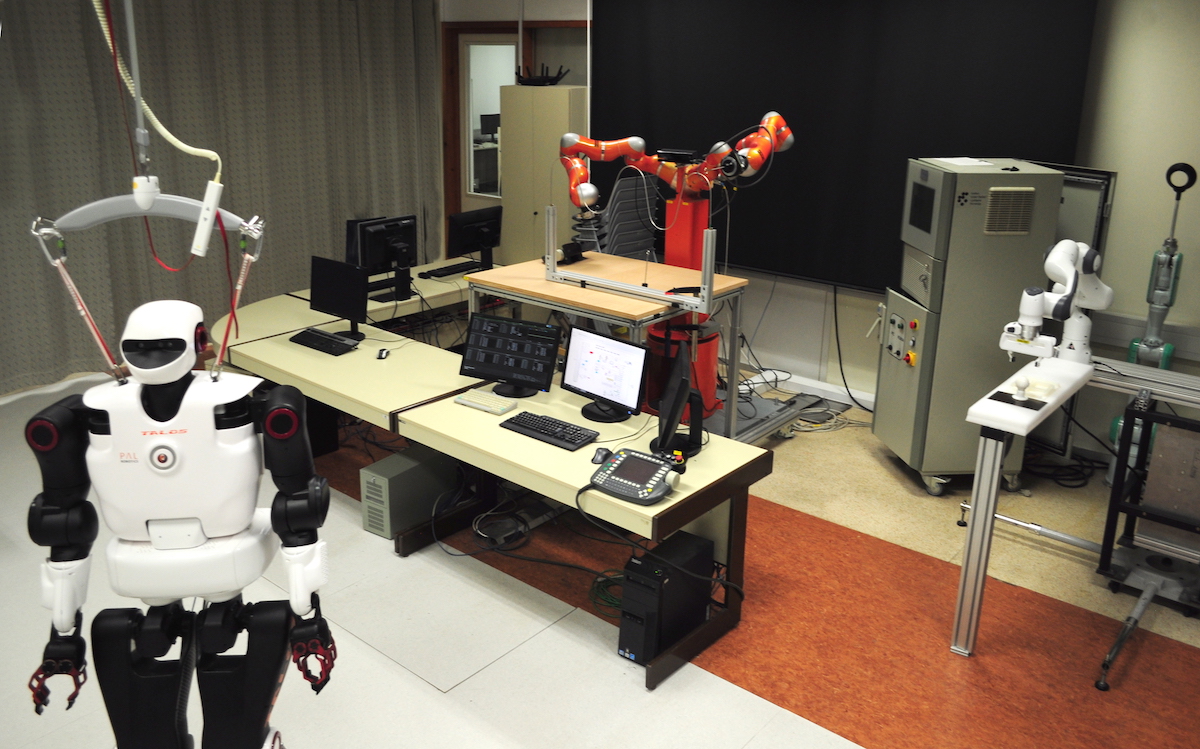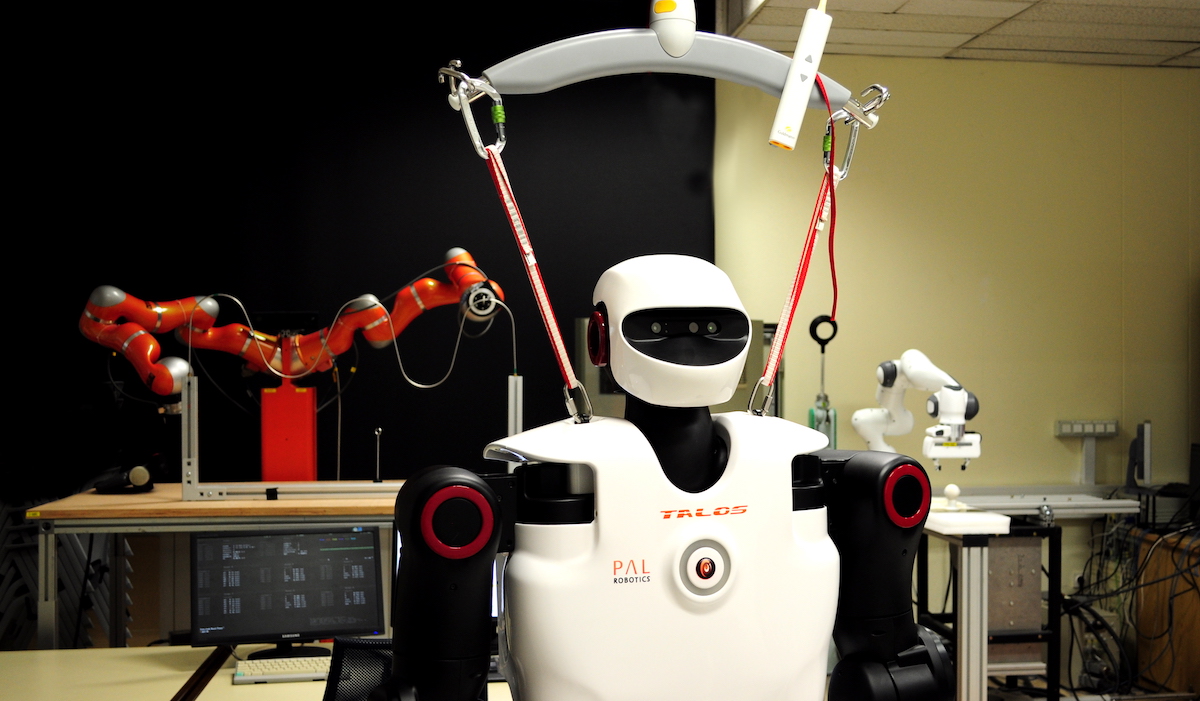Humanoid and cognitive robotics
Research on humanoid and cognitive robotics is carried out on our three main platforms:
- The humanoid robot TALOS from PAL
- A bimanual KUKA LWR-4 setup, often equipped with the Karlsruhe humanoid robot head
- A pair of Franka Emika Panda robots.
Other older (Mitsubishi PA-10) and smaller robots, such as the Nao, offer additional possibilities. With a variety of force-torque sensors and cameras, we can set-up complex experiments, which include motion capture, force plates, EMG, and other equipment, often used in research on neuromechanics and biorobotics.
The center-piece of our dedicated laboratory for research on humanoid and cognitive robotics is the fully torque-controller, full-sized humanoid robot TALOS, developed by PAL Robotics.


Industrial robotics
Through the EU project Reconcell we have developed a fully integrated, reconfigurable robotic cell, which comprises two UR-10 Universal robots with force-torque sensors, a reconfigurable frame, plug-and-produce connectors and other peripheral hardware, including cameras.

Neuromechanics and Biorobotics
Our research on neuromechanics and biorobotics is facilitated by an in-house developed and applied 6-DOF Stewart platform with human-carrying capabilities, combined with mounted force plates, active motion capture and EMG measuring equipment.
Other haptic robotic equipment, such as the Haptic master, virtual-reality setups and development of exoskeleton systems, including within the EU project SPEXOR, allow for advanced research.

CoBoTaT

CoBoTaT is a laboratory for advancing collaborative robot behaviors in physical human-robot interaction scenarios. It was established in 2018 with the financial support of Director’s found 2018.
Environmental Physiology and Ergonomics – Ljubljana Facilities
Two specialized laboratories for different aspect environmental physiology and ergonomics at our department facilities in Ljubljana allow for research in different aspects. Our main laboratory comprises an environmental chamber, which allows for simulation of various atmospheric conditions, ranging from tropical-like and desert-like with high temperatures and high or low humidity, respectively, to artic-like conditions. In the chamber we perform various experiments with subjects, who undergo trials on specialized equipment or simulated real-world scenarios. We also use the environment chamber with our manikins, specifically developed for this purpose.
Our second laboratory is equipped with a hyperbaric chamber.


Environmental Physiology and Ergonomics – Planica Facilities
The Olympic Sports Centre in Planica houses the Planica Planetary Habitat Simulation Facility (PlanHab centre) which is maintained by the Environmental Physiology group from the Jozef Stefan Institute (IJS). The PlanHab centre is equipped with an oxygen adsorption system (B-Cat) which allows the team to conduct confinement, isolation, training and bedrest (BR) research and experimentation in a normobaric hypoxia ambient. The main scope of the centre is to investigate the combined and separate effects of hypoxia on inactivity and sustained BR on human physiological and psychological systems. By providing the infrastructure for confinement, BR and hypoxia, the results gleaned from the research conducted here is applicable to multiple fields including: space life science, exercise training/de-adaptation, special clinical populations (ageing, obesity, COPD or respiratory insufficiency) and industrial standards.
The PlanHab centre is home to a Short Arm Human Centrifuge (SAHC), 3 experimental zones (1 radiation suite, 1 cardiovascular suite and 1 exercise and muscle assessment suite), a hypoxic BR floor (10 double rooms), a biochemical laboratory and office and living quarters for the research staff. The modular design of PlanHab affords the environmental research group the opportunity to assemble and modify laboratory space tailored specifically to the requirements of experimental project. Furthermore, the PlanHab centre and facilities may be utilised to investigate the effectiveness of potential countermeasures to protect against the deconditioning associated with BR. Essentially, a successful space flight, or interplanetary mission is based on the successful regulation / management of the habitat, be that the ISS, space ship or planetary habitat. In all cases, it is essential to understand the complex interaction of the many physiological, psychological and environmental factors. The PlanHab centre is designed to do just that.

